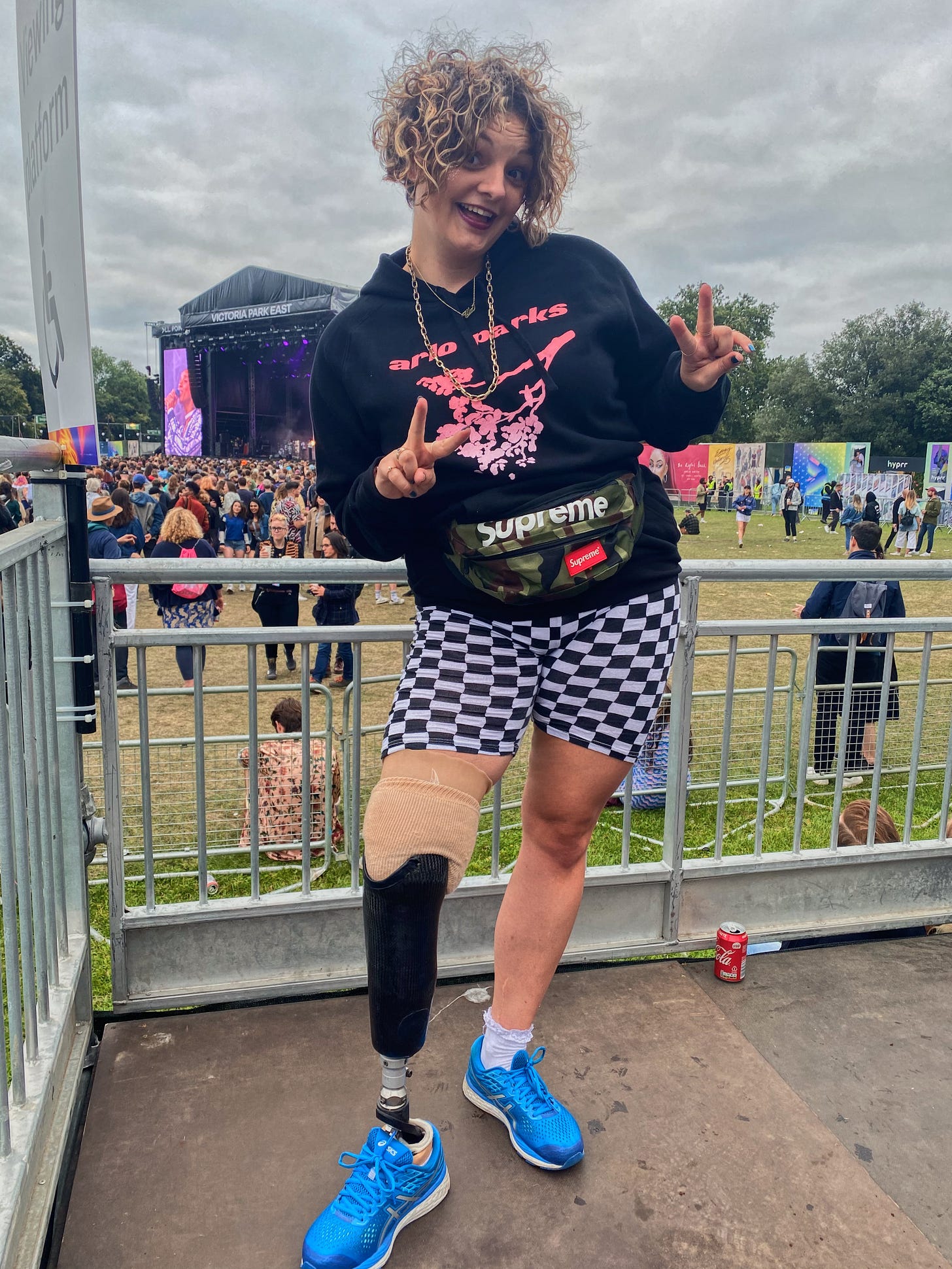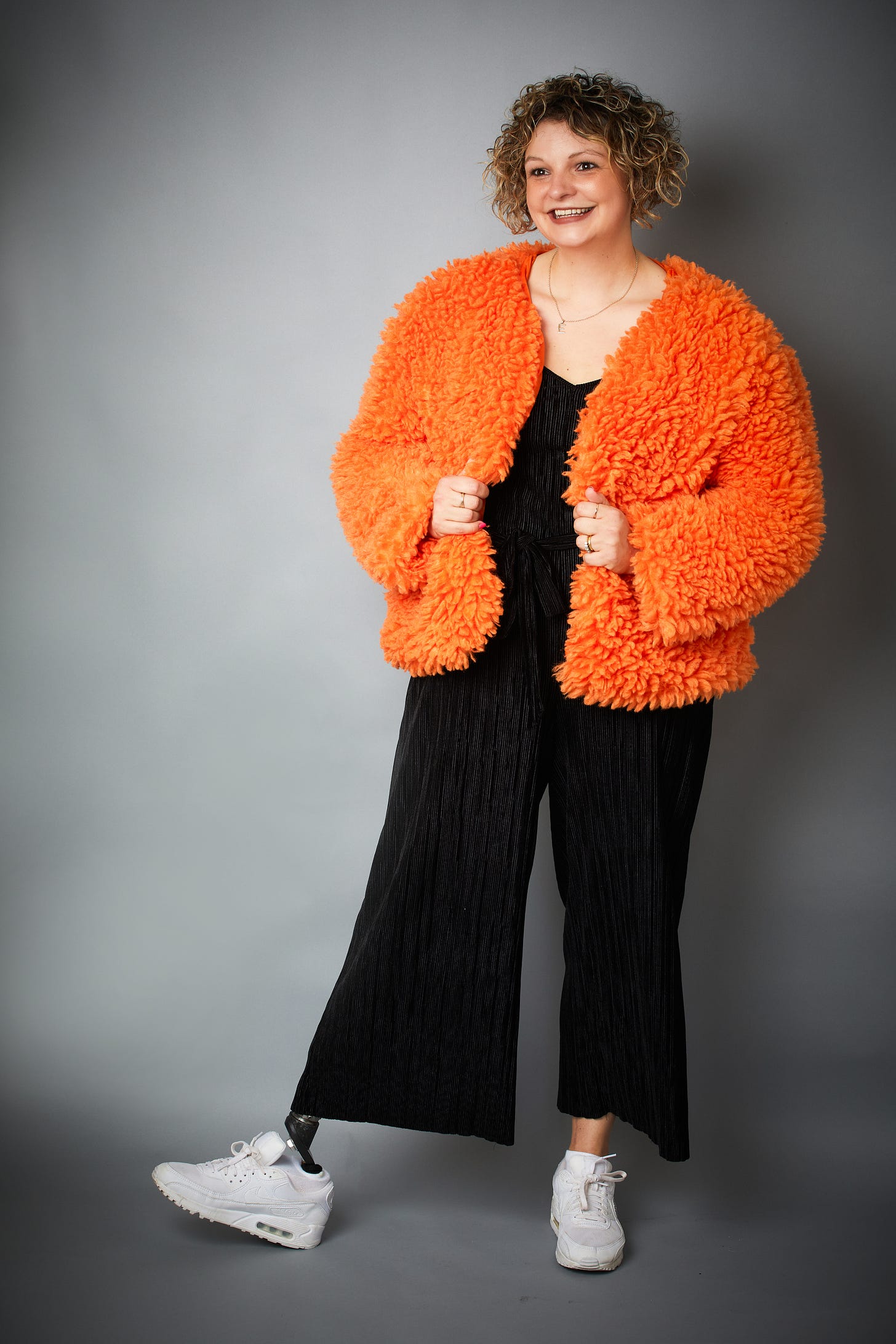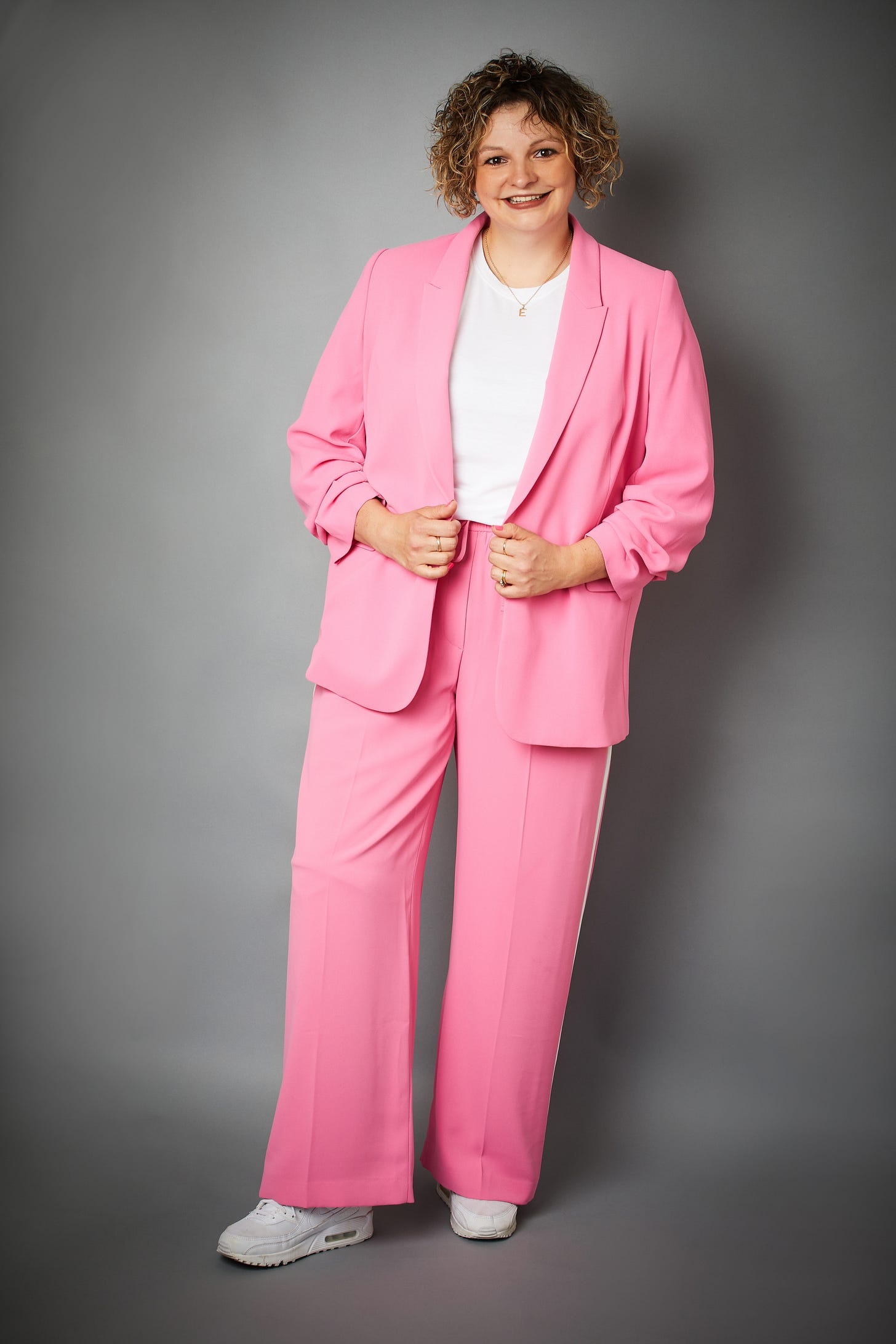When you suffer a trauma, very often, it’s often the little things you worry about the most. The bigger milestones are far too scary, too overwhelmingly daunting to contemplate. And so you bury them, pushing them to the very back of your mind and replacing them with smaller niggles which grow in concern until you’re able to answer them. For me, this ‘niggle’ was skinny jeans.
What to wear is an eternal concern for young, image-conscious women. And to begin with, I was convinced I’d never wear my Topshop skinnies again. ‘I’m going to be stuck in tracksuit bottoms and trainers forever!’ I remember wailing countless times to my poor, ever-comforting family. Meeting a sporty amputee judo instructor during my first 2 weeks in hospital didn’t help. A natural tomboy, she turned up wearing… well, yep, you’ve guessed it.
When I eventually went home, The Great Shoe Clear Out was equally traumatic. I’m not a heels girl by any means, but the slightest angle can upset your balance, so even brogues and ankle boots were suddenly out of the question. On many occasions, I could be found crying into the shelves of Clarks, a desert boot half wedged onto my prosthetic foot while members of the public tried not to stare and bemused sales assistants floundered.
Working for glossy magazines, I’d always taken pride in my appearance. Post-accident, I was lucky to get out of gym wear, let alone think about make-up. Physical trauma can take its toll on appearance, from embarrassment about scars to a new desire to cover and conceal certain parts of the body. In time, thankfully, that has changed for me – but I’ve had to make some significant changes to my wardrobe.
Clothes have sentiment, they evoke memories. ‘Clothes give a sense of identity from early on in our lives,’ says fashion director and brand consultant, Wendy Rigg. ‘They are what makes us feel ourselves, and they project the image we want the world to see.’ No wonder, then, that being forced to get rid of them can throw up a tide of conflicting emotion. ‘Becoming an amputee means a total wardrobe rethink, and that can be a massive and daunting challenge,’ says Wendy.
As an experienced fashion journalist who has styled numerous people in the course of her career, Wendy is well-versed in how linked our clothing choices are with our sense of self. As a former colleague, she played a huge part in my own journey when it came to re-establishing my identity through clothes. After months of living in baggy tracksuit bottoms or loose fitness shorts, going back to work, back to my trendy office in London, was a daunting prospect. So when Wendy offered to take me to Topshop on Oxford Street and help style me along with a personal shopper from the store, I leapt at the opportunity. It was a turning point, a moment when I realised I needed to reframe my mindset. Instead of mourning my old look, I would celebrate and embrace the chance to discover a new one. This was Ella 2.0 - not losing, but finding.
Ever had that feeling when you try an outfit on and instantly feel a million dollars? Well, that’s what I had on that summer afternoon in Topshop, twirling in front of the changing room mirrors in crisp shirts, flowing dresses and yes, jeans, an item of clothing I honestly never thought I’d wear again due to the constraints of my prosthetic leg. ‘Presenting the best image of ourselves boosts self esteem, and clothing plays a key role in this,’ explains Wendy. ‘It's an important part of the ritual of self care and is crucial for our mental health.’
She was right. I remember virtually strutting into the office on my first day back, unbothered by the stares or the fact I still needed my walking stick. Because my new clothes gave me a sense of power back, the freedom to make decisions about my body after so many months of feeling like everyone else had more control over it than I did. Clothes, it turns out, are so much more than material to cover our modesty. As I learnt, and as Wendy explains, they ‘can be a powerful tool in helping someone bounce back from trauma and adversity.’ ‘How we look,’ she says, ‘is intrinsic to our confidence, which is why it's worth spending the time on what you wear.’ Incidentally, this is something I’ll definitely be telling my husband in future each time he raises his eyebrows when I buy a new outfit.
So how can we cultivate this mindset, and begin to see a necessary clear out as a positive thing? ‘Getting rid of clothes that meant a lot to you, and that remind you of who you used to be is tough and incredibly sad, but it's an important part of acceptance,’ says Wendy. ‘Don't do this on your own - get your most positive and practical friend or relative to help you. If there's any way you could customise items, or get someone you know who is great at that kind of thing to do it for you, then that's an idea worth playing with. It's hard to see the positive when getting rid of items with emotional credence, but selling items on Vinted or Ebay brings revenue for spending on new items that will work for you. Giving your wardrobe a detox is great for your mind, home and wallet, and organising it in a way that makes it user friendly can be very satisfying, not to mention time saving in the long run.’
Taking the first step can be daunting. I know this first-hand. Wendy’s advice for anyone who’s struggling is to start with a bit of online shopping. ‘Take your time and try things on in the comfort of your own home, to find out what works for you, with the help of a trusted pal or family member,’ she suggests.
Eight years on from my amputation, I have definitely cultivated my own sense of style. Sure, there’ll always be a time and a place for trackies, but I now actively favour bright colours and bold patterns. Instead of desperately trying to blend in, I actively want to stand out. And the sadness of throwing away so many shoes has led to a borderline obsession with funky trainers and a re-discovery of Crocs for summer. Once laughed at and strictly for garden use only, the unique plastic shoe has not only made a comeback (trust me, all the cool kids are wearing them) but has achieved almost cult status in the amputee community. They stay on my prosthetic foot so well, and I’m yet to find a comfier alternative for sunny days.
Not only have I embraced my style, I recently did something I never imagined I’d have the confidence for: I signed up to a modelling agency. Zebedee Talent is an amazing inclusive talent agency who are making waves in the industry. Their aim is to increase and improve representation of people with disabilities within the media - and I’m thrilled to be playing a part in their movement.
‘Inclusivity has become an important part of the fashion industry, and amputee models are increasingly being seen on international runways as designers recognise the importance in creating clothes that work for everyone,’ says Wendy. While my own fashion dreams aren’t quite that grand, I’m more determined than ever to share the power of clothing. Because when we feel good in our own skin, confidence radiates - and there’s no feeling more joyful than that.







